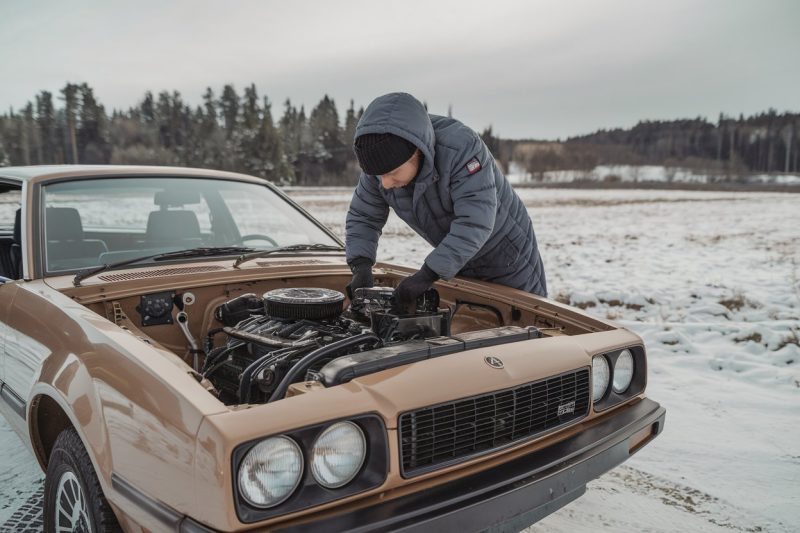Winter can be harsh on your vehicle, and taking the proper steps to winterize it is crucial for safe driving and vehicle longevity. When the temperature drops, your car is more susceptible to problems like low tire pressure, battery failure, and icy windows. A little preparation can save you a lot of trouble, ensuring your car runs smoothly and keeping you safe during the winter months.
One of the first steps in winterizing your vehicle is ensuring your tires are ready for the cold. Winter tires provide better traction on snowy and icy roads, essential for safe driving. It’s also important to check your tire pressure and tread depth regularly. Cold weather can cause tire pressure to drop, making it harder for your tires to grip the road. Adequate tread depth ensures your tires can channel snow and water away, reducing the risk of sliding.
Fluids play a significant role in keeping your car running well during winter. Antifreeze and coolant are vital for preventing your engine from freezing up. Ensure you have the right mix of antifreeze and water for optimal protection. Additionally, your windshield washer fluid should be rated for cold temperatures to avoid freezing. Keeping your oil and viscosity at the right level also ensures that your engine runs smoothly in the cold.
By preparing your vehicle for winter, you ensure it operates efficiently and keep yourself and your passengers safe. Whether it’s a fully charged battery or a well-stocked emergency kit, each step in winterizing your car is an investment in your safety and peace of mind.
Inspecting and Replacing Tires
Table of Contents
- 1 Inspecting and Replacing Tires
- 2 Checking and Refilling Fluids
- 3 Battery and Electrical System Check
- 4 Preparing Emergency Kits
- 5 Frequently Asked Questions
- 6 What does it mean to winterize your car?
- 7 Why is it essential to winterize your vehicle?
- 8 What are the essential steps to winterize my vehicle?
- 9 How can I check the tread depth on my tires?
Winter tires are crucial for safe driving when roads are icy or covered in snow. These tires have special rubber compounds that stay flexible in cold temperatures, providing better traction and control. Unlike regular tires, winter tires have deeper treads designed to grip the road in snowy and slushy conditions. If you live in an area that experiences heavy snowfall, switching to winter tires can significantly improve your vehicle’s handling and braking ability.
Checking tire pressure and tread depth is another essential part of preparing your tires for winter. Cold weather causes tire pressure to drop, leading to uneven wear and reduced fuel efficiency. Use a tire pressure gauge to check each tire and inflate them to the manufacturer’s recommended levels. Maintaining proper tire pressure ensures that your tires grip the road well and wear evenly.
Tread depth is also essential for safe winter driving. The tread helps channel snow, water, and slush away from the tire, reducing the risk of sliding. You can check tread depth using a tread depth gauge or the penny test. Insert a penny into the tread with Lincoln’s head facing down. If you can see the top of Lincoln’s head, it’s time to replace the tire. Ensuring your tires are in good condition will keep you safer on slippery winter roads.
Checking and Refilling Fluids
Antifreeze, also known as coolant, is one of the most important fluids to check in the winter. Antifreeze prevents your engine from freezing in extremely cold temperatures and helps protect it from overheating and corrosion. Ensure you have the right mix of antifreeze and water, typically a 50/50 blend, to ensure optimal performance. You can use an antifreeze tester to check the mixture in your radiator and top it off if necessary.
Ensuring your windshield washer fluid is rated for winter conditions is also essential. Regular washer fluid can freeze on your windshield, reducing visibility and making driving dangerous. Switch to a cold-weather washer fluid that can handle lower temperatures and help remove frost, ice, and road grime.
Checking your oil is another crucial step in winterizing your vehicle. In cold weather, oil can thicken, making it harder for the engine to turn over. Use the manufacturer’s recommended oil type and viscosity for winter driving. Thinner oils often perform better in cold conditions, ensuring your engine starts smoothly and runs efficiently. Regularly checking and refilling these fluids keeps your vehicle in top shape and ready to face the challenges of winter driving.
Battery and Electrical System Check
A fully charged battery is vital for starting your car in cold weather. Cold temperatures can reduce a battery’s power, making it harder to start the engine. Check the battery’s charge level with a voltmeter. A fully charged battery should read about 12.6 volts or higher. If it’s below this, it might be time to charge your battery or consider getting a new one. Also, inspect the battery terminals for any signs of corrosion, which can impede the battery’s performance. Clean any corrosion with baking soda and water, and ensure the terminals are tightly connected.
Inspecting your car’s electrical connections and lights is another essential step. Check all the lights, including headlights, tail lights, brake lights, and turn signals, to ensure they function properly. Winter days are shorter, and visibility can be poor, so good lighting is essential for safe driving. Replace any burnt-out bulbs and ensure all electrical connections are secure and corrosion-free. Additionally, having a working defroster and heater is crucial for maintaining visibility and comfort during cold months.
You enhance your vehicle’s reliability by ensuring your battery is fully charged and your electrical system is in top shape. This preparation helps avoid unexpected breakdowns and ensures you are safe and visible on the road during winter.
Preparing Emergency Kits
Having an emergency kit in your car can be a lifesaver during winter. Conditions can change quickly, and preparing for unexpected situations like getting stuck in snow or dealing with an unforeseen breakdown is essential. An emergency kit should contain basic items to help you manage until help arrives or you can move your vehicle again.
Here are some essential items for a winter emergency kit:
- Blanket: To keep warm if you have to wait in your car.
- Ice scraper and snow brush: To clear your windows.
- Flashlight with extra batteries: For visibility in the dark.
- Jumper cables: In case your battery dies.
- Non-perishable snacks and water: To stay nourished.
- First-aid kit: For any minor injuries.
- Tire chains: If you expect heavy snow.
- Shovel: To dig your car out of snow.
- Sand or kitty litter: To provide traction if you’re stuck.
Store the emergency kit in an accessible area of your vehicle, such as the trunk or backseat. Ensure everyone driving the car knows where the kit is located and how to use its contents. By being prepared with an emergency kit, you ensure you have the necessary tools and supplies to handle winter driving challenges safely and efficiently.
Conclusion
Winterizing your vehicle is essential to ensure safety and reliability during the cold months. From inspecting and replacing tires to checking fluids and batteries and preparing an emergency kit, each step is crucial in keeping your vehicle in top condition—regular maintenance and preparation help to avoid unexpected breakdowns and keep you safe on winter roads.
At My Mechanic Joe, we understand the importance of thorough winter preparation. Our expert auto service in Woodstock, GA, is here to help you with all your auto repair, diagnostics, and maintenance needs. Visit us today to ensure your car is ready for whatever winter throws your way. Schedule your winter car check-up with My Mechanic Joe and confidently drive this winter.
Frequently Asked Questions
What does it mean to winterize your car?
Winterizing your car refers to preparing your vehicle to handle the challenges of winter weather. This includes ensuring that your car is equipped to operate efficiently in cold weather, such as checking the cooling system, replacing wiper blades, and ensuring your tire pressure is optimal. Proper auto care during this time can significantly enhance your safety and the overall performance of your vehicle.
Why is it essential to winterize your vehicle?
The importance of winterizing your vehicle cannot be overstated. As temperatures drop and snow and ice become prevalent, the risk of accidents and vehicle breakdowns increases. By taking the necessary steps to prepare your vehicle, you ensure that it can handle winter conditions effectively, helping to minimize the chances of being stranded or experiencing mechanical failures. Additionally, it can save you money on repairs and enhance your overall driving experience during the winter months.
What are the essential steps to winterize my vehicle?
To winterize your car, follow these essential steps: 1. Inspect your tires for tread depth and consider switching to winter tires if you live in an area with heavy snowfall. 2. Check and maintain proper tire pressure, which can drop in colder weather. 3. Replace your wiper blades and refill your wiper fluid with a solution that can withstand freezing temperatures. 4. Ensure your coolant system is filled with appropriate antifreeze levels to prevent freezing. 5. Test your battery and charging system to ensure reliability in cold weather. 6. Inspect your brakes and lights for optimal performance. 7. Prepare an emergency kit, including blankets, food, water, and other essentials for unexpected situations.
How can I check the tread depth on my tires?
You can use a simple penny test to check the tread depth on your tires. Insert a penny into your tire’s tread groove with Lincoln’s head facing down. If you can see the top of Lincoln’s head

